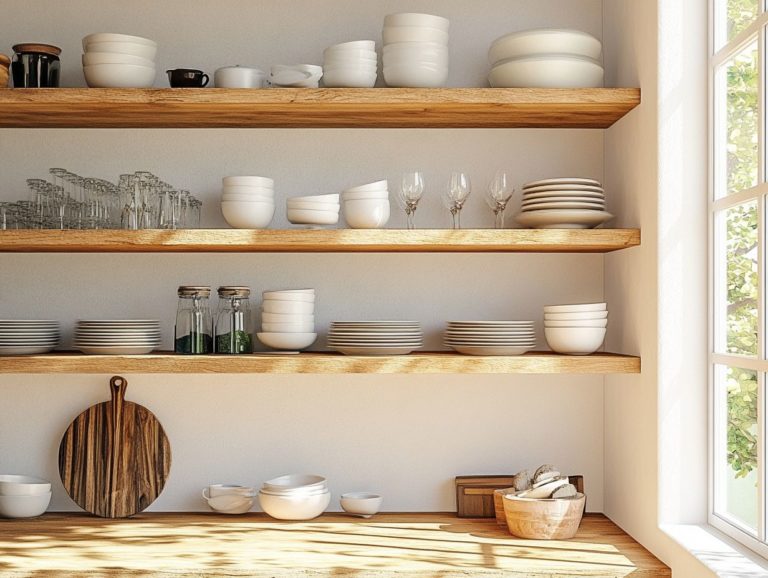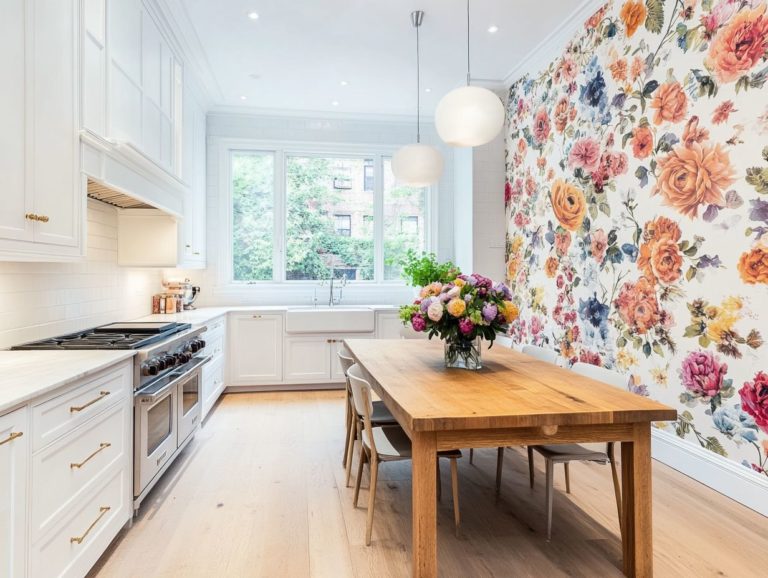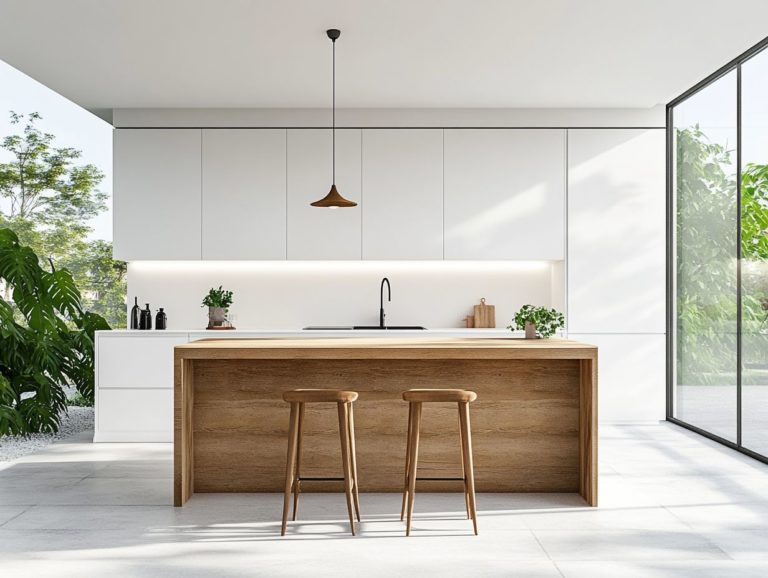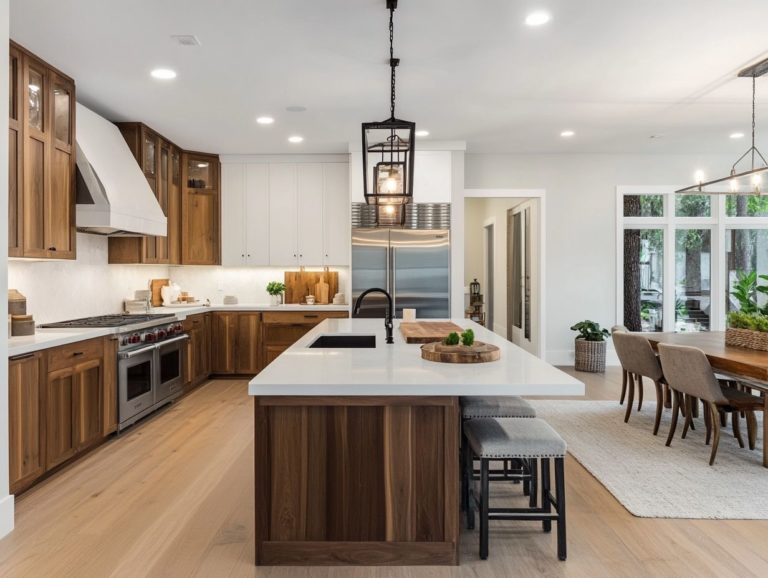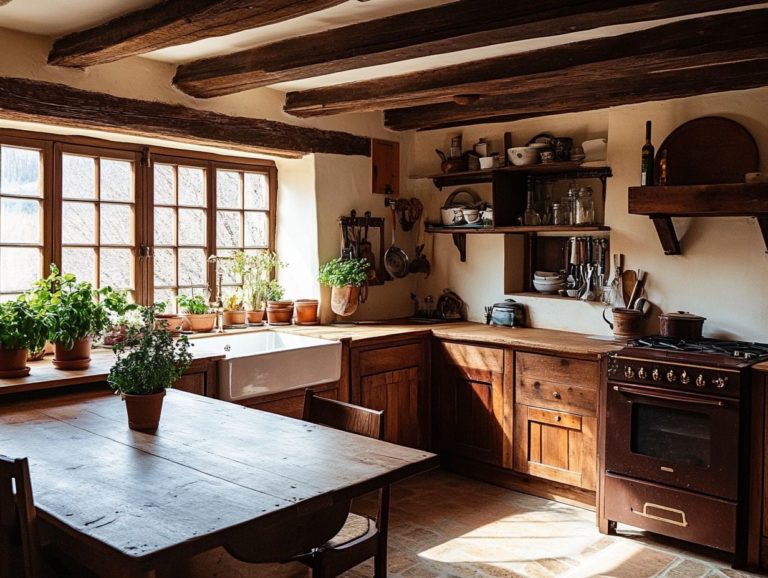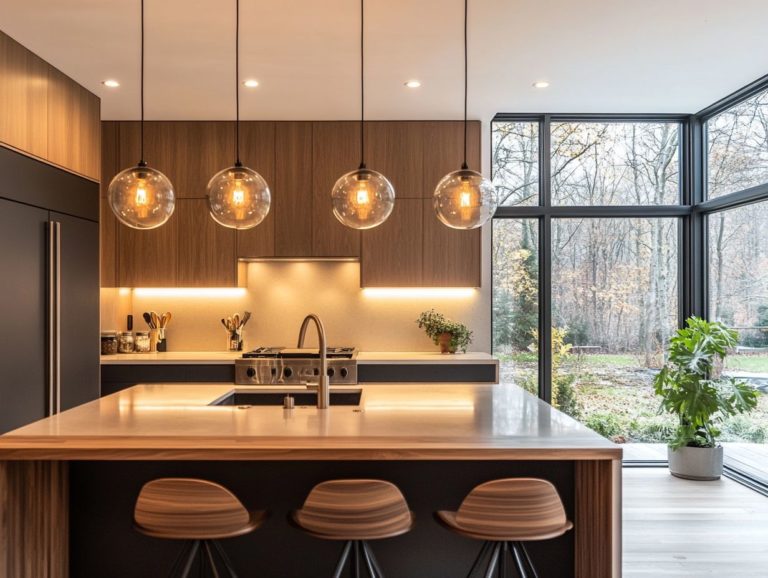Eco-Friendly Kitchen Design Trends
In a time when sustainability holds unprecedented importance, opting for eco-friendly kitchen design is emerging as both a savvy and stylish choice for homeowners like you. Let’s uncover the exciting benefits of a greener kitchen!
This article delves into the myriad benefits of crafting a greener kitchen, from minimizing your environmental footprint to reaping financial rewards.
Explore essential elements such as sustainable materials, energy efficiency, and cutting-edge technologies that are redefining the future of kitchen design.
Prepare to elevate your space into an eco-conscious sanctuary with practical tips and the latest trends that will inspire you to make a meaningful impact. Start your eco-friendly journey today!
Contents
Key Takeaways:
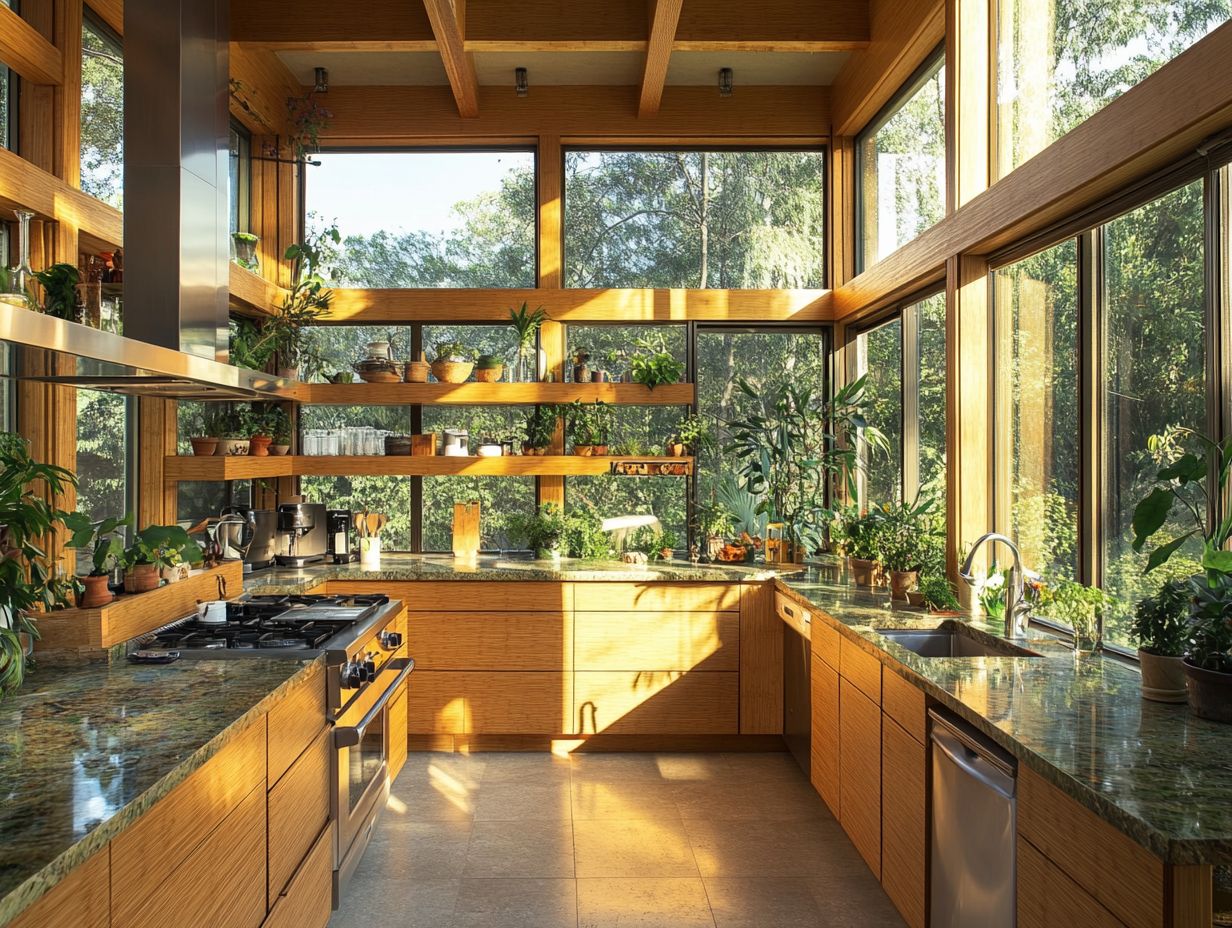
Eco-friendly kitchen design not only benefits the environment but also your wallet. By using sustainable materials and energy-efficient appliances, which use less electricity, you can reduce your carbon emissions and save on utility costs.
Water conservation and waste reduction are key elements of eco-friendly kitchen design. Incorporating features like low-flow faucets and composting bins can make a significant impact on the environment.
Looking towards the future, emerging technologies and innovations will continue to drive eco-friendly kitchen design trends. By staying informed and incorporating these advancements, you can create a more sustainable and efficient kitchen.
What is Eco-Friendly Kitchen Design?
Eco-friendly kitchen design is all about creating a space that prioritizes sustainability while minimizing your environmental impact. Imagine using reclaimed wood for a warm look, modern appliances that boost energy efficiency, and furniture and décor that promote a healthier living environment.
By choosing eco-friendly practices—like sourcing second-hand kitchens and using non-toxic cleaners—you’re not just crafting a beautiful space; you’re also promoting green habits within your family and community.
The importance of eco-friendly kitchen design goes beyond aesthetics; it reflects a commitment to health and well-being and shows your dedication to preserving the planet for future generations.
Incorporating renewable materials like bamboo or recycled glass in your countertops and backsplashes reduces waste while adding a touch of natural beauty to your home. Plus, efficient appliances mean lower energy consumption, translating to cost savings over time.
This approach can ignite creativity for your family to adopt more sustainable habits, reinforcing a lifestyle that values mindfulness and responsible consumption.
Ultimately, an eco-friendly kitchen is where contemporary design seamlessly meets environmental responsibility.
Benefits of Eco-Friendly Kitchen Design
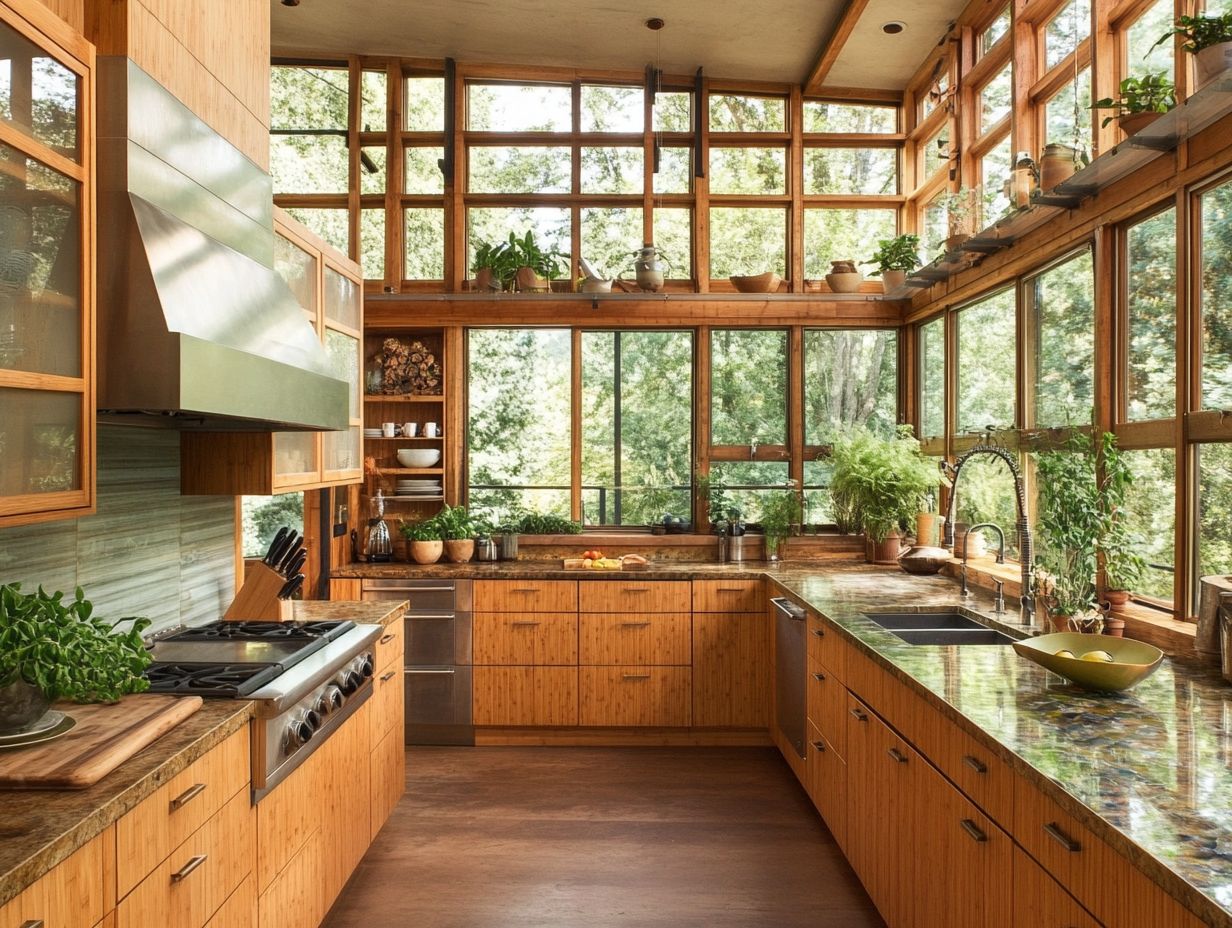
The advantages of eco-friendly kitchen design are numerous and extend far beyond mere aesthetics. You can enjoy significant cost savings, minimize your environmental impact, and enhance your quality of life.
By incorporating sustainable practices into your kitchen renovations—like using upcycled décor and energy-efficient appliances—you can craft a space that is not only visually stunning but also beneficial to the planet.
Environmental Impact and Cost Savings
Adopting an eco-friendly kitchen design can yield remarkable environmental benefits, contributing to reduced carbon emissions and promoting recycling initiatives, all while offering substantial cost savings over time.
Prioritizing energy efficiency with modern appliances and sustainable materials minimizes your environmental footprint while lowering your utility bills.
When you design your kitchen with water conservation in mind—incorporating low-flow faucets and efficient dishwashers—you can enhance your savings even further by cutting down on water bills and reducing resource waste.
Choosing durable, high-quality materials supports a sustainable lifestyle and means fewer replacements down the line, translating directly to economic advantages.
Embracing these sustainable practices creates a harmonious blend of financial prudence and environmental responsibility, reinforcing the notion that caring for the planet can indeed be a financially rewarding endeavor. Join the movement toward a greener kitchen now!
Key Elements of Eco-Friendly Kitchen Design
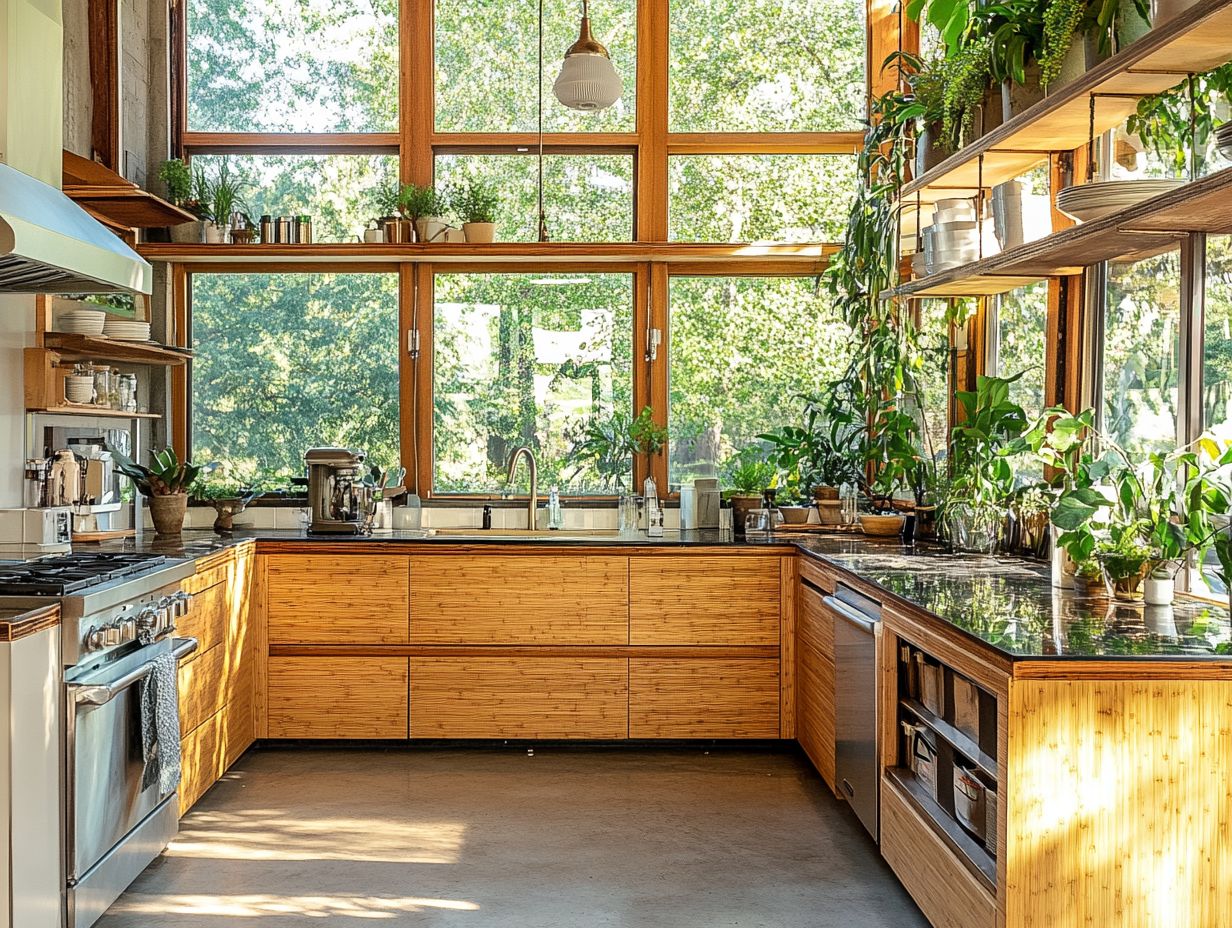
Key elements of eco-friendly kitchen design include a range of features that elevate the space. Consider incorporating sustainable materials and innovative layouts.
Energy-efficient appliances and eco-friendly practices enhance your kitchen’s overall functionality. By choosing durable materials and thoughtfully planning the layout, you can craft a kitchen that looks stunning and aligns with your commitment to sustainable living.
Sustainable Materials and Energy Efficiency
Choosing sustainable materials and ensuring energy efficiency are essential for eco-friendly kitchen design. They significantly reduce your environmental impact while fostering healthier living spaces.
Select materials like bamboo for cabinetry and countertops. Incorporate appliances that save energy to create a kitchen that is both functional and environmentally responsible.
Reclaimed wood offers a distinctive aesthetic and minimizes waste. It’s an excellent choice for countertops or shelving and enhances the visual appeal of your kitchen.
Sustainable countertops, crafted from recycled glass or paper composites, provide durable surfaces for daily use. Integrating energy-efficient appliances, such as Energy Star-rated refrigerators and dishwashers, can dramatically lower your electricity consumption.
Small changes, such as using LED lighting and installing low-flow faucets, contribute to a greener kitchen environment. This ensures your space is not just beautiful but also kind to the planet.
Water Conservation and Waste Reduction
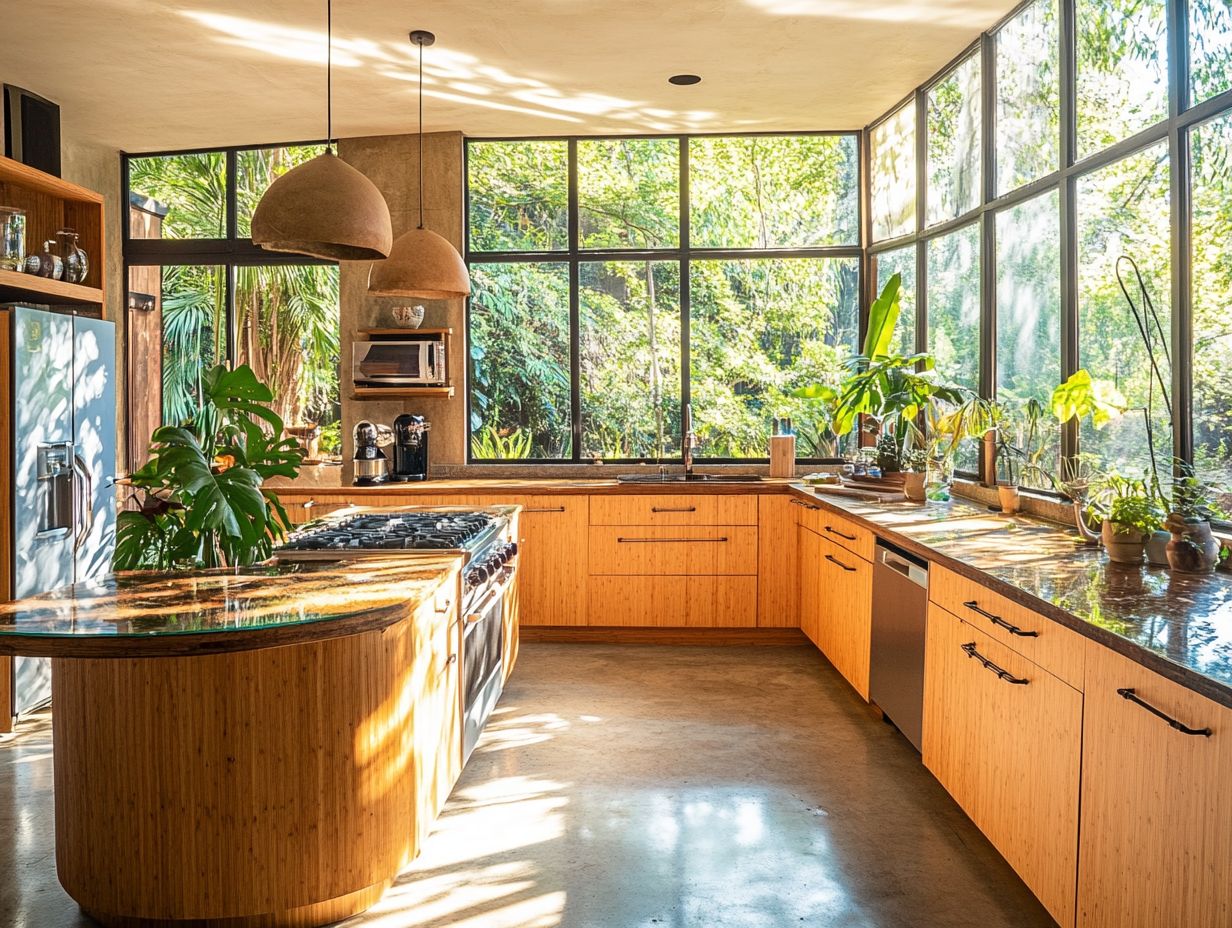
Incorporating water conservation and waste reduction techniques into your eco-friendly kitchen design is crucial. These strategies promote sustainability and enhance overall efficiency.
By implementing composting and using water-saving fixtures, you can significantly reduce your water consumption. This actively minimizes waste through effective recycling initiatives.
These strategies optimize your resources and encourage a mindful approach to daily cooking habits. Investing in water-efficient appliances, like ENERGY STAR-rated dishwashers and low-flow faucets, allows you to cut down on water usage without sacrificing functionality.
Integrating a composting system enables you to repurpose organic waste into nutrient-rich soil. Participating in local recycling programs ensures that materials like plastics and glass are managed responsibly.
By embracing these approaches, you foster a sustainable lifestyle and inspire those around you to make eco-conscious choices.
Incorporating Eco-Friendly Design into Your Kitchen
Incorporating eco-friendly design into your kitchen presents an exciting opportunity to merge aesthetics with sustainability. You can create a space that is as stylish as it is environmentally responsible.
Embark on this journey through renovations that prioritize sustainable sourcing practices. Select vintage furniture or upcycled decor while embracing eco-friendly materials and appliances.
This thoughtful approach enhances the beauty of your kitchen and reflects your commitment to the planet. Ready to revamp your kitchen? Start your eco-friendly journey today!
Tips and Ideas for a Greener Kitchen
Transform your kitchen today with exciting and practical tips for a greener lifestyle. Focus on organization and sustainable practices to minimize your environmental impact.
Choose plastic-free paint and multifunctional appliances. Prioritize energy-efficient options to create an eco-friendly haven.
For countertops and cabinets, consider bamboo or reclaimed wood. These materials are both durable and renewable.
Organize items in glass jars and use compost bins. This reduces waste and streamlines cooking preparations.
Implement LED lighting to lower your energy consumption. Experiment with herb gardens on your windowsills to cut down on store-bought alternatives!
These small changes can elevate your kitchen, making it functional and eco-conscious.
Future Trends in Eco-Friendly Kitchen Design
Eco-friendly kitchen design is evolving. Imagine smart appliances seamlessly blending with sustainable practices for enhanced functionality.
As eco-conscious shoppers prioritize sustainability, designers are creating stylish kitchens that champion energy efficiency and responsibility.
Emerging Technologies and Innovations
Technologies are key drivers of change in eco-friendly kitchen design. With smart appliances, you can reduce your carbon footprint while enjoying modern comforts.
Energy-efficient devices like induction cooktops minimize utility bills and enhance kitchen functionality. Smart home devices allow you to monitor and control resources effectively.
Using sustainable materials like reclaimed wood and bamboo boosts your commitment to an eco-friendly environment. As technology evolves, make choices that enhance beauty and resonate with eco-conscious living.
Frequently Asked Questions
- What eco-friendly trends should I consider for my kitchen design? Sustainable materials, energy-efficient appliances, and natural lighting sources are popular trends.
- How can I use sustainable materials in my kitchen? Consider bamboo, reclaimed wood, recycled glass, and metal for a unique and durable design.
- Which appliances are energy-efficient? Look for Energy Star-rated appliances that use less energy and reduce your carbon footprint.
- How can I reduce water usage in my kitchen? Install a low-flow faucet and invest in a water-efficient dishwasher.
- Can I use natural lighting in my kitchen? Yes! Skylights, large windows, and light tubes can bring in natural light and warmth.
- How can I go eco-friendly on a budget? Use energy-efficient light bulbs, non-toxic cleaning products, and consider upcycling old furniture.
Start transforming your kitchen into an eco-friendly haven now!
